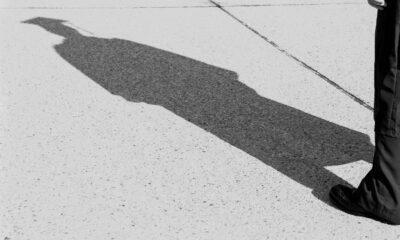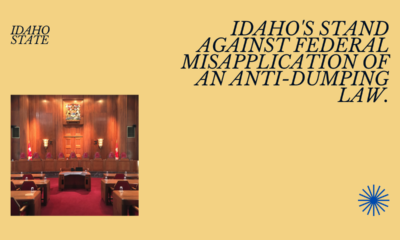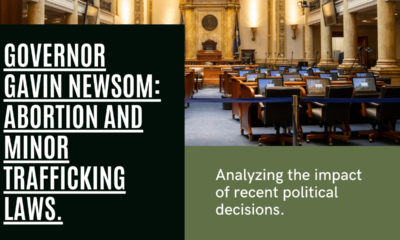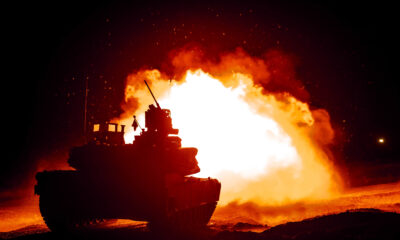Education
Countering Historical Myths of the Palestinian Experience
The Palestinian narrative consists of many untrue myths about the 1948 Israel War for Independence and life before that war.

Much of the left’s animus towards Israel is based on a false history of the 1948 War: the uprooting of a longstanding Arab population, quelching their aspirations for an independent Palestinian state. Instead, there were longstanding Jewish communities in Palestine; a significant share of Arab refugees were recent migrants to Jewish areas; there was little Palestinian nationalist sentiment; and the Nakba had nothing to do with the refugee problem.
There were longstanding Jewish populations in a number of Palestinian cities. Since at least the nineteenth century, the majority of Jerusalem residents were Jewish despite its home to the third most holy site in Islam. The reason was that the Al-Aqsa Mosque was never a pilgrimage site and during the Ottoman era was never maintained so by the 1920s had severely deteriorated. Besides organizing pogroms against Jewish communities in 1921 and 1929, Haj Amin al-Husseini, the Grand Mufti of Jerusalem, made a concerted effort to transform the mosque by sending emissaries throughout the Muslim world to obtain funds for renovations. These successful efforts led him to be revered in the Muslim world.
The Mufti’s leadership of the 1936-39 Arab Revolt led to his exile in Iraq. In 1941, he fled to Germany where he was an important propagandist for the Nazis, helping to organize a Bosnian contingent in the Nazi Army. After the war, he “escaped” from house arrest in France, and was given a hero’s welcome when arriving in Cairo. The newly formed Arab League made him the head of the Arab Higher Committee, the representative of Palestinian interests.
A significant share of Arabs living in Jewish areas were recent migrants. Throughout the prewar years, Jewish successes drew Arab migrants from other parts of Palestine. The historian Fred Gottheil estimated that between 1922 and 1931 migrants comprised one-quarter of the Arab population growth in areas that would become the state of Israel.
Arab migration to Jewish areas continued during the next decade, fueled by the worsening situations in rural areas. The sociologist Christopher Anderson estimated that as many as half of the Arab peasantry were either agricultural laborers or tenant farmers, with a large share of the remainder having landholdings that were too small to survive long term. Jewish land acquisitions exacerbated the situation.As a result, many Arab workers moved to the dismal slums that had begun to proliferate around coastal cities, especially Haifa and Jaffa.
Poor Muslims who had streamed there regularly returned to their villages for seasonal work and married spouses from their birthplaces. When the 1948 War broke out, they returned to their villages to avoid the military conflict. This was especially the case after news of the Deir Yasim massacre was broadcast throughout Arab communities. At this village, just outside Jerusalem, Jewish forces were indiscriminate in their response to the unexpected resistance they encountered, bombing structures without concern for civilian casualties. As a result, an estimated 110 Arabs were killed, half noncombatants.
The Palestinian leadership more than doubled the numbers, claiming inaccurately that many were killed after the combat had ended. Their goal was to counter the reluctance of Arab countries to send troops after British rule ended. The immediate effect, however, was to instill fear of what would happen if Zionist forces attacked Arab villages. As a result, many Arabs fled even before their villages were attacked. For these reasons, some important historians, including Benny Morris and Meron Benvenisti, distinguish between the 350,000 refugees by the end of May 1948 and the similar numbers afterward. They argue that military efforts and considerations are responsible for the earlier group while ethnic cleansing objectives dominated the latter group.
During the first phase of the war before foreign armies entered, the Jewish forces were opposed by the Arab Liberation Army (ALA); the hoped-for indigenous army organized by the Arab League, supplemented by foreign volunteers. However, it was unable to enlist many Palestinians so that as much as 90% was comprised of foreign volunteers. Indeed, it was led by Fawzi al-Qawuqji, a Lebanese Arab nationalist, rather than a Palestinian.
He had led the foreign volunteers who had fought during the 1936-39 Arab revolt. Qawugji escaped British capture, going to Syria where he was active in the 1941 Jewish pogroms and helped install a pro-Nazi regime. When the British overthrew this new regime, Qawuqji escaped to Germany where he fought for the Nazis. Released from a Soviet prison camp in 1947, he came to Cairo and was chosen to lead the “indigenous” rebellion.
Gaining meager aid from Arab villagers, the ALA had few victories and many defeats. And a belated attempt by the Arab League to form a provisional Palestinian government failed. Most Palestinian leaders opposed him, particularly for his dictatorial policies during the Arab Revolt ten years earlier. Then he harshly responded to those who questioned any of his decisions, even assassinating some. This opposition not only rejected his provisional government but his efforts to have a say in postwar affairs in the West Bank or Gaza.
That the war was solely against the Jews is clear when the concept of the Nakba was developed. Pan-Arabism was the overriding meaning of the Nakba when first enunciated in 1948 with the publication, The Meaning of the Nakbaby Constantin Zureiq, the most important Arab nationalist intellectual at the time.He saw the defeat of the Arab armies as a catastrophe for allowing an alien Jewish state within Arab lands.
In 1958, the Nakba was commemorated by radio stations of the United Arab Republic calling on the world’s Arab and Muslim states to hold a symbolic five minutes to mourn the establishment of Israel. The historian Hillel Cohen noted that there was no mention of the Palestinian displacement. Negation of Israel became the ideological foundation for Hamas and other fundamentalist Islamic organizations.
Only in the 1990s did the Nakba evolve into a focus on the refugees. At the time, Yasar Arafat was pressed to follow through on the Oslo Accords. In his negotiations, Arafat never offered an alternative map to the ones proposed by the Israeli government. Instead, he demanded an uncapped right-of-return of refugees, strengthening his case by referring to their plight as the Nakba. And for the last twenty-five years, the right-of-return has been the major stumbling block to a two-state solution, not Jewish settlements. Indeed, over this time period, there have only been three small West Bank settlements approved with virtually the entire population growth in long-time settlements around Jerusalem.
None of this denies the harshness of Zionist policies during and after the war: The ethnic clearing that dominated the second half of the war and an unwillingness to allow more than a small share of refugees to return to their villages. However, given the Nazi leadership of the Palestinian struggle, and the universal Arab unwillingness to accept any Jewish state in its midst, Zionist policies towards Arab villagers are understandable.
Finally, without a Jewish state, there would have been nowhere to go for Holocaust survivors stuck in displaced persons camps, the Mizrachi Jews when the Arab countries engaged in ethnic cleansing in the early 1950s, or Russian Jews when Soviet policies turned antisemitic. And the tens of thousands of Ethiopian Jews would have remained oppressed. Are these the images of colonial settlers that Palestinian supporters project?
This article was originally published by RealClearWorld and made available via RealClearWire.
Robert Cherry is an American Enterprise Institute affiliate and author of "The State of the Black Family: Sixty Years of Tragedies and Failures – and New Initiatives Offering Hope."
-

 Education3 days ago
Education3 days ago‘Grading for Equity’: Promoting Students by Banning Grades of Zero and Leaving No Class Cut-Ups Behind
-

 Civilization5 days ago
Civilization5 days agoEarth Day Should Celebrate U.S. Progress & Innovation
-

 Family3 days ago
Family3 days agoIdaho defends against abortion mandate
-

 Civilization4 days ago
Civilization4 days agoNewsom plays silly abortion politics
-

 Constitution2 days ago
Constitution2 days agoPresidential immunity question goes to SCOTUS
-

 Education5 days ago
Education5 days agoThe Intifada Comes to America. Now What?
-

 Civilization5 days ago
Civilization5 days agoEarth Day – part of cultural Marxism
-

 Civilization4 days ago
Civilization4 days agoWaste of the Day: China Still Owes Over $1 Trillion to American Bondholders













And something people also need to remember is that the Jews bought the land back from those that held title to it. And many of the non-Jewish people they hired were considered the dregs of society they were from. Something people need to learn as well is the history of Islam and the fact Mohammad hated the fact that people in Arabia were becoming Jewish, and Christian, and abandoning the worship of the god Hubal, who is also known historically as Baal. The Islam theocracy is rooted in antisemitism, depravity and violence. This becomes obvious when one reads the Qur’an and learns Islam real history over the last 1400 years.